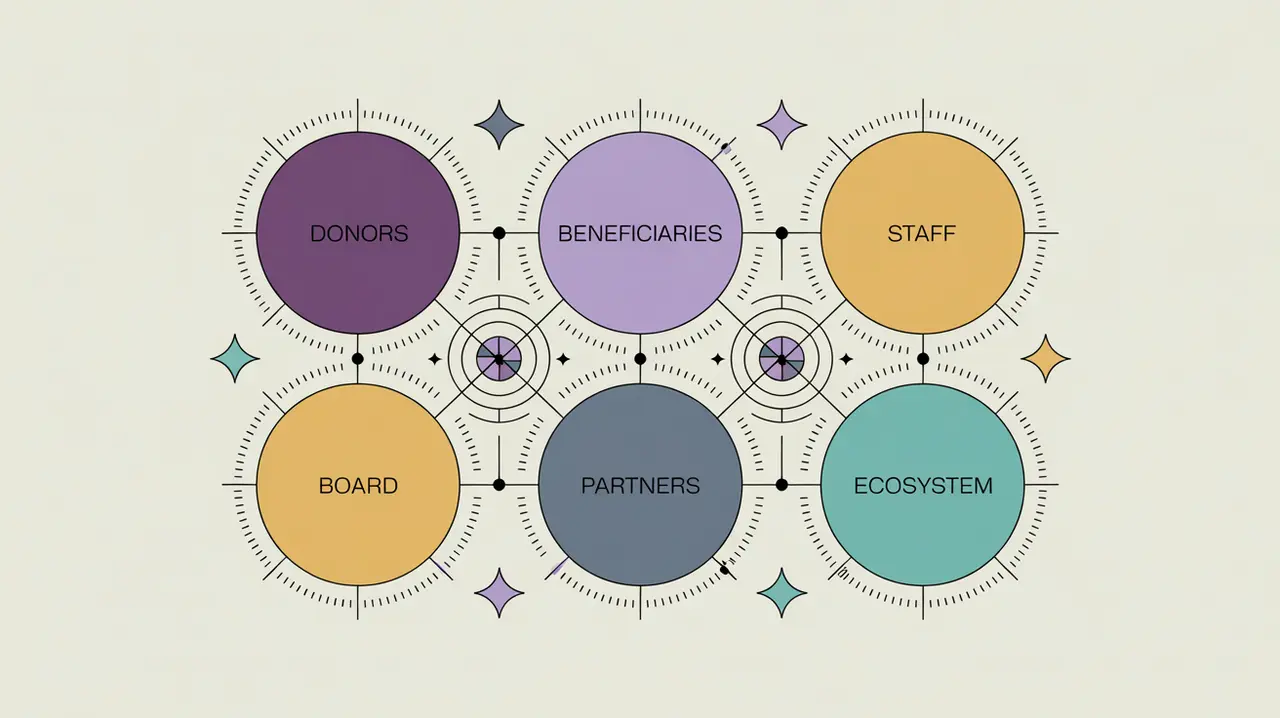What Does Stakeholder Management Involve?
Stakeholder management ensures that nonprofits identify, understand, and engage the individuals and groups who influence or are influenced by their work. Stakeholders include donors, beneficiaries, staff, board members, government agencies, partners, and the wider community. Effective management builds trust, balances interests, and creates alignment around shared goals.
In practice, stakeholder management involves mapping relationships, analyzing influence and interests, developing tailored engagement strategies, and maintaining consistent communication. It requires listening as much as informing, building coalitions, and addressing conflicts constructively. Done well, stakeholder management strengthens collaboration, ensures legitimacy, and creates advocates who extend the organization’s reach and credibility.
When nonprofits neglect stakeholders, they risk alienation, mission drift, or reputational damage. Strong stakeholder management ensures durable relationships that support sustainability and impact.
What Competencies Are Associated with This Role?
Stakeholder management requires diplomacy, analysis, and relational skills. Competencies include:
- Mapping stakeholders and analyzing influence/interest
- Designing tailored engagement strategies
- Facilitating communication between diverse groups
- Building coalitions and partnerships
- Managing conflicts with fairness and transparency
- Coordinating stakeholder consultations and forums
- Monitoring stakeholder satisfaction and feedback
- Balancing competing priorities across groups
- Maintaining records of stakeholder interactions
- Reporting stakeholder engagement outcomes to leadership and funders
How Might AI and Automation Help This Role?
AI and automation can strengthen insight and coordination. Opportunities include:
- AI-powered stakeholder mapping and network analysis
- Automated CRM tools to track interactions and histories
- Sentiment analysis from surveys and social media
- Generative AI to draft engagement strategies and reports
- Predictive analytics to identify potential advocates or risks
- Automated reminders for follow-ups and relationship milestones
- Dashboards integrating stakeholder feedback and engagement data
- AI tools to personalize communication at scale
What Are the Roles by Experience Level?
Roles range from administrative support to strategy leadership:
- Entry: Stakeholder Assistant, Engagement Clerk – maintain records, manage logistics, support communication
- Mid: Stakeholder Officer, Engagement Specialist – design strategies, coordinate engagement activities, monitor relationships
- Senior: Stakeholder Manager, Engagement Lead – oversee frameworks, resolve conflicts, liaise with leadership
- Executive: Director of Stakeholder Engagement, Chief Engagement Officer – set institutional engagement strategy, build partnerships, represent the organization externally
How Transferable Are the Skills from This Role?
Stakeholder management skills transfer across sectors wherever relationship-building and influence are required. Within nonprofits, they lead to roles in partnerships, fundraising, advocacy, and leadership. Beyond nonprofits, they are relevant in government, corporate affairs, consulting, and international development. The ability to balance diverse interests, foster collaboration, and sustain trust is universally valuable.







